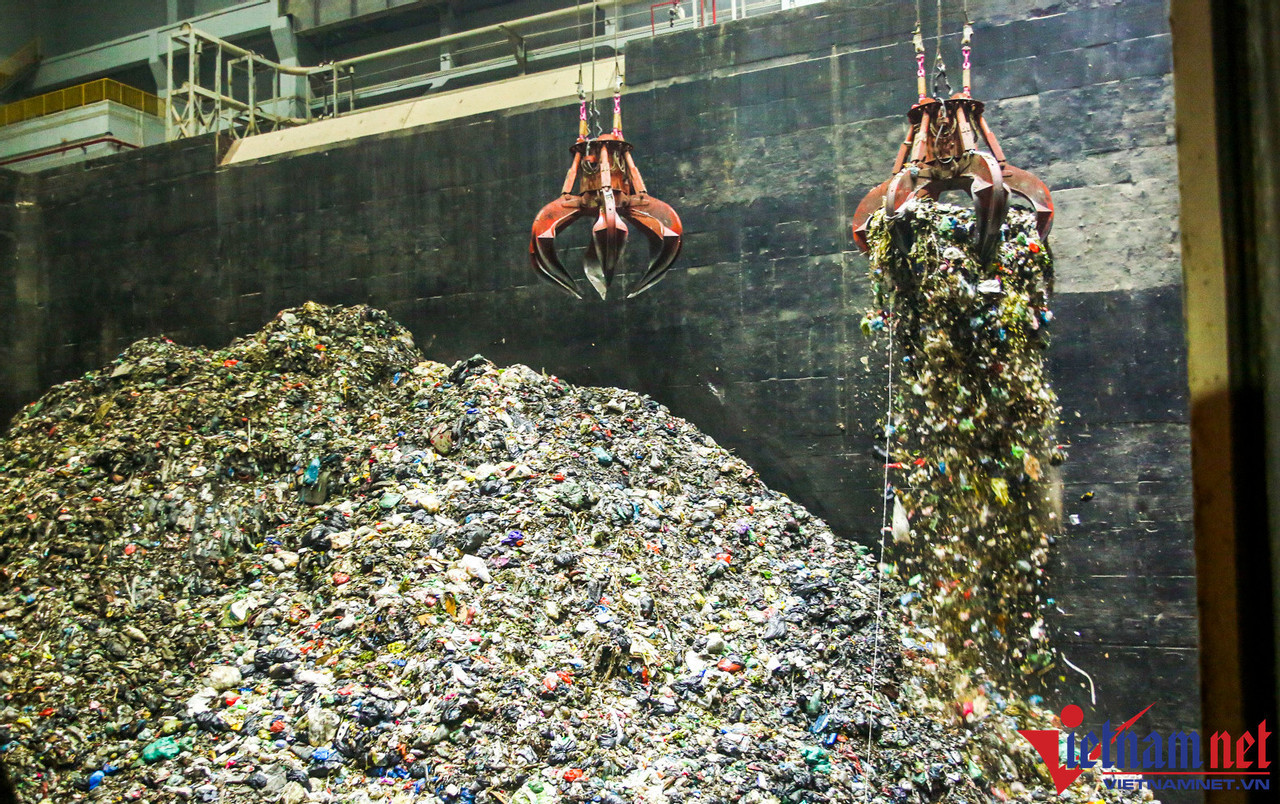
Solid waste and biomass electricity projects have enjoying fixed preferential prices for 20 years under Prime Minister decisions in 2014 and 2020.
However, the Ministry of Industry and Trade (MOIT) is designing another scheme, under which the ministry will set price frames for electricity to be generated from biomass, waste and solid waste. This would replace the current fixed pricing scheme.
After the price frames are set, electricity buyers and sellers will negotiate real prices and provisions in power purchase agreements (PPA).
Currently, the fixed price of 10.05 US cents per kwh (VND2,000) is applied to WTE projects with the aim to encourage investment in environmental treatment solutions.
The price level serves as a foundation for municipal and provincial people’s committees to call for bids and negotiate with investors on prices for domestic waste treatment to ensure reasonable profits for investors.
Some cities and provinces have chosen WTE investors in Hanoi, HCM City, Can Tho, Hue and Bac Ninh.
However, to date, only three WTE plants in Can Tho, Hanoi and Bac Ninh can meet the requirements for electricity generation. The investors of other plants are still negotiating prices with localities. Some plants remain unfinished, or their investors are still following administrative procedures.
Experts believe this price is not attractive to investors, because WTE technology is costly.
In China, the price of 6 yuan per kwh, or 10.05 US cents, has been applied since 1980. The country has basically settled environmental pollution caused by domestic waste, and has 1,500 WTE plants.
The investment rate in China is lower than in Vietnam because the country has mastered WTE technology, and the calorific value of waste in China is higher because of higher Chinese living standards. This means that the volume of electricity generated from one ton of burnt waste in China is twice as much as Vietnam’s.
Chinese plants have a capacity of 1,000-2,000 tons of waste a day, while Vietnamese plants have a capacity of 500 tons on average. In principle, the smaller the plants are, the lower the efficiency.
As a result, some provinces that have found investors still cannot start WTE projects because of anticipated low efficiency, which makes it difficult to seek loans from banks.
Some cities and provinces have had to cancel projects as investors could not mobilize capital and anticipated a low IRR (internal rate of return). The projects included the Xuan Son project registered by T&T, Japanese invested Hitachi Zosen Corporation and Indovin Power in Hanoi, and one registered by Japan-based JET in Nghe An.
Which price?
WTE is not a commercial electricity generation project like wind, solar, hydraulic and thermal power. Its major goal is treating waste to protect the environment, and electricity can be generated during waste incineration. The revenue from electricity generation is just additional income which gives investors money to reduce waste treatment costs.
The current fixed price of 10.05 cents per kwh is not attractive to investors. However, it is enough for some investors to inject money into the field.
But if MOIT’s proposal on electricity price frames is applied, then there will be two unknowns for investors – waste treatment fees and electricity prices. So they cannot define the breakeven point. Localities and investors still don’t know which price – waste treatment fees, or electricity price – will be negotiated first.
If localities and investors conduct negotiations based on the electricity price of 10.05 cents per kwh, what will happen if the price is not accepted by Electricity of Vietnam (EVN), the only wholesale buyer?
Experts say that state agencies need to ask the government and MOIT to apply a pricing mechanism under which electricity prices are stable and predictable, which would attract more investors to WTE projects.
The experts stressed that incinerating domestic waste, not landfills, is the optimal solution for waste treatment. Landfills are causing serious environmental problems.
Luong Bang